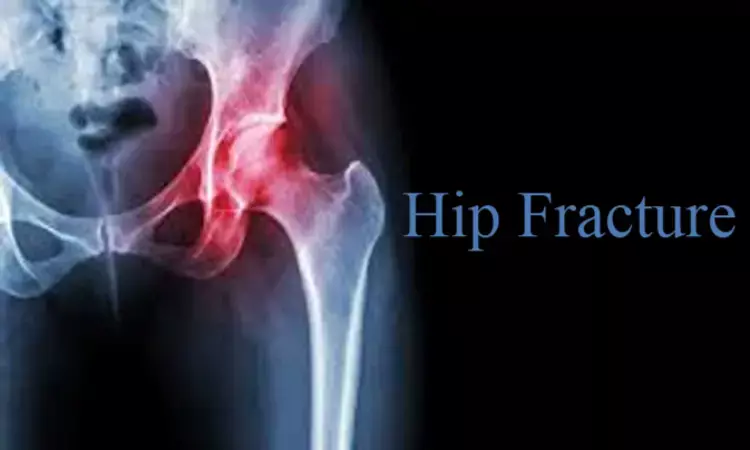- Home
- Medical news & Guidelines
- Anesthesiology
- Cardiology and CTVS
- Critical Care
- Dentistry
- Dermatology
- Diabetes and Endocrinology
- ENT
- Gastroenterology
- Medicine
- Nephrology
- Neurology
- Obstretics-Gynaecology
- Oncology
- Ophthalmology
- Orthopaedics
- Pediatrics-Neonatology
- Psychiatry
- Pulmonology
- Radiology
- Surgery
- Urology
- Laboratory Medicine
- Diet
- Nursing
- Paramedical
- Physiotherapy
- Health news
- Fact Check
- Bone Health Fact Check
- Brain Health Fact Check
- Cancer Related Fact Check
- Child Care Fact Check
- Dental and oral health fact check
- Diabetes and metabolic health fact check
- Diet and Nutrition Fact Check
- Eye and ENT Care Fact Check
- Fitness fact check
- Gut health fact check
- Heart health fact check
- Kidney health fact check
- Medical education fact check
- Men's health fact check
- Respiratory fact check
- Skin and hair care fact check
- Vaccine and Immunization fact check
- Women's health fact check
- AYUSH
- State News
- Andaman and Nicobar Islands
- Andhra Pradesh
- Arunachal Pradesh
- Assam
- Bihar
- Chandigarh
- Chattisgarh
- Dadra and Nagar Haveli
- Daman and Diu
- Delhi
- Goa
- Gujarat
- Haryana
- Himachal Pradesh
- Jammu & Kashmir
- Jharkhand
- Karnataka
- Kerala
- Ladakh
- Lakshadweep
- Madhya Pradesh
- Maharashtra
- Manipur
- Meghalaya
- Mizoram
- Nagaland
- Odisha
- Puducherry
- Punjab
- Rajasthan
- Sikkim
- Tamil Nadu
- Telangana
- Tripura
- Uttar Pradesh
- Uttrakhand
- West Bengal
- Medical Education
- Industry
Long term bisphosphonate use may increase atypical femur fracture risk, claims NEJM study

According to a report published in The New England Journal of Medicine,the risk of atypical femur fracture increased with longer duration of bisphosphonate use and rapidly decreased after bisphosphonate discontinuation. However the absolute risk of atypical femur fracture remains very low as compared with reductions in the risk of hip and other fractures with bisphosphonate treatment.
Since their introduction in the 1990s, bisphosphonates have been the mainstay of osteoporosis treatment as they inhibit osteoclast-mediated resorption and remodeling of bone.
Reports of unusual fragility fractures in the subtrochanteric region and along the femoral diaphysis in bisphosphonate-treated patients first appeared approximately 15 years ago, which were followed by larger studies of these fractures (now known as atypical femur fractures). To date, substantial uncertainty and controversy remain regarding the magnitude of the association between bisphosphonates and atypical femur fractures.
With this background, Dennis M. Black and colleagues took up a study that addressed several key gaps in the evidence regarding atypical femur fractures, including their relation to bisphosphonate use, race or ethnic group, and other risk factors.
The study design consisted of women 50 years of age or older who were receiving bisphosphonates and who were enrolled in the Kaiser Permanente Southern California health care system; who were followed from January 1, 2007, to November 30, 2017.
The primary outcome was atypical femur fracture. Data on risk factors, including bisphosphonate use, were obtained from electronic health records. Fractures were radiographically examined.
The following key facts are revealed in the analysis.
Among 196,129 women, 277 atypical femur fractures occurred. The risk of atypical fracture increased with longer duration of bisphosphonate use.
The hazard ratio as compared with less than 3 months increased from 8.86 (95% confidence interval [CI], 2.79 to 28.20) for 3 years to less than 5 years to 43.51 (95% CI, 13.70 to 138.15) for 8 years or more.
Bisphosphonate discontinuation was associated with a rapid decrease in the risk of atypical fracture.
Decreases in the risk of osteoporotic and hip fractures during 1 to 10 years of bisphosphonate use far outweighed the increased risk of atypical fracture among Whites but less so among Asians.
"In addition to the duration of bisphosphonate treatment, we identified several other noteworthy risk factors for atypical femur fracture, including Asian ancestry, shorter height, higher weight, and glucocorticoid use for 1 year or more." Wrote the authors.
The researchers also concluded that the results support previous studies showing that the absolute risk of atypical femur fracture is very low as compared with the greater number of fractures that are effectively prevented by bisphosphonates.
Primary source: The New England Journal of Medicine
For the full article click on the link: sci-hub.tw/10.1056/NEJMoa1916525
Dr Satabdi Saha (BDS, MDS) is a practicing pediatric dentist with a keen interest in new medical researches and updates. She has completed her BDS from North Bengal Dental College ,Darjeeling. Then she went on to secure an ALL INDIA NEET PG rank and completed her MDS from the first dental college in the country – Dr R. Ahmed Dental College and Hospital. She is currently attached to The Marwari Relief Society Hospital as a consultant along with private practice of 2 years. She has published scientific papers in national and international journals. Her strong passion of sharing knowledge with the medical fraternity has motivated her to be a part of Medical Dialogues.
Dr Kamal Kant Kohli-MBBS, DTCD- a chest specialist with more than 30 years of practice and a flair for writing clinical articles, Dr Kamal Kant Kohli joined Medical Dialogues as a Chief Editor of Medical News. Besides writing articles, as an editor, he proofreads and verifies all the medical content published on Medical Dialogues including those coming from journals, studies,medical conferences,guidelines etc. Email: drkohli@medicaldialogues.in. Contact no. 011-43720751


